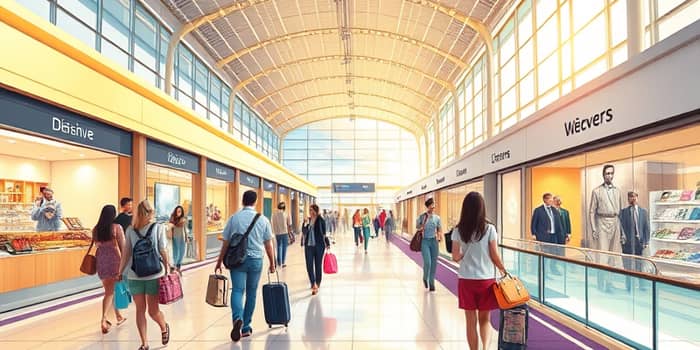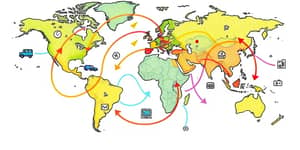
As the world emerges from travel restrictions and reconnects across borders, the luxury market is experiencing an unprecedented resurgence. With airports filled once more and affluent travelers eager to indulge, luxury goods and experiences are thriving.
The luxury travel retail sector is outpacing broader economic and GDP growth, with S&P Global Ratings forecasting annual expansion of 7–10% through 2025, well above global GDP rates of 3.3%. In tandem, the overall travel retail market is valued at $83.6 billion in 2025 and is projected to swell to $234.1 billion by 2034 at a remarkable 12.1% CAGR.
While personal luxury goods saw a slight contraction of 2% in 2024, the total luxury market—including travel, dining, and wellness experiences—surged to €1.48 trillion, buoyed by a 5% rise in experiential spending. By 2025, global sales are expected to surpass pre-pandemic levels, driven by pent-up demand and the return of international travel.
Regional contributions to the luxury mosaic reveal a shifting landscape. Asia-Pacific dominates with over 40% market share, led by China’s rebounding consumers and India’s expanding urban professionals. The United States follows at around 22%, and Europe holds approximately 17% while focusing on duty-free expansion. Emerging markets across Africa, Latin America, and the Middle East are rapidly adding affluent consumers.
By 2025, Chinese buyers are forecast to account for 50% of global luxury spending, up from 33% in 2019, cementing their status as the world’s most powerful luxury consumers. The U.S. market is set to lead growth through 2027 with steady gains fueled by domestic and business travel recovery.
The luxury sector’s vigor reflects a confluence of powerful trends. First and foremost, the international travel rebound has revitalized airport boutiques, border shops, and cruise ship stores. Business and leisure travel in major markets like the U.S. have returned to or exceeded pre-pandemic volumes, lighting the spark for robust retail sales.
Brands are innovating to capture impulse purchases by offering limited editions, eco-friendly packaging, and custom services that resonate with younger, tech-savvy HNWIs. These efforts have created an immersive retail ecosystem that ties into travelers’ aspirations for distinctive experiences.
Post-pandemic, affluent consumers have moved beyond “revenge buying” into a deeper quest for exclusive, memorable experiences. Wellness retreats, gourmet dining, and curated cultural excursions now eclipse pure product acquisition. This shift underscores why experiential categories now represent roughly 80% of total luxury spending.
Travelers are particularly drawn to tax-free pricing, brand exclusives, and high-value packages that enhance the in-transit experience. Younger generations of HNWIs favor digital-first shopping, seeking seamless integration between online pre-orders and in-person pickups at airports.
Despite the pandemic-induced dip in 2020, the top 100 luxury companies generated $252 billion in sales, with the leading 10 accounting for 63% of the total market. Many firms have rebounded swiftly, and stock market performances attest to their resilience. For instance, The RealReal saw shares surge 443.8% in 2024, reflecting investor confidence in the sector’s long-term potential.
Luxury conglomerates are expanding beyond classic goods into experiential realms—wellness, fine dining, cruises—ensuring diversified revenue streams and deeper consumer engagement. This strategic pivot positions them to capture a larger slice of the burgeoning €1.48 trillion market.
Despite robust growth, brands face headwinds including macroeconomic uncertainty, currency fluctuations, and uneven regional recoveries. China’s comeback, while strong, has unfolded more slowly than expected, underscoring the need for adaptable strategies.
Brands that embrace these imperatives will stand out in a competitive landscape, forging lasting connections with discerning consumers and capitalizing on the ongoing travel rebound.
The intersection of renewed global travel and rising affluence has created a fertile environment for luxury goods and experiences. By innovating at airports and beyond, integrating digital touchpoints, and responding to evolving consumer desires, luxury brands are not only regaining lost ground but also setting new benchmarks for growth.
As the world continues to open its doors, the appetite for exceptional, transformative experiences will drive luxury markets to new heights. Companies that listen to their customers, invest in sustainable practices, and deliver unforgettable moments will be the true success stories of this era.
References













